We were recently contacted about fabricating a custom brace for a Green sea turtle (Chelonia mydas) with an open fracture sustained to the right radius and ulna with a large wound on the ventral aspect. The fracture was continuous with partially healed lacerations of the skin. The turtle was found by members of the public off Carrot Island and turned over to the Coast Guard.
The Injury to the right front flipper was severe, but the entire flipper appeared to have viable blood flow and nerve function, making salvage of the limb a good possibility. Surgical stabilization of the fractures may have been an option but traditional reduction did not appear to be a practical solution, so we accepted this challenge as a unique opportunity to apply additive manufacturing techniques due to the irregular shape of the flipper as well as the urgent nature of the case. We received CT scans of the turtle which included both the broken and intact front flippers. We reconstructed these scans into 3D models using Mimics software.
The distorted geometry of the injured flipper prevented us from directly designing the brace, so our first approach was to design the brace off of the contralateral (intact) limb. After isolating the intact flipper in the model, we created a mirror model to use as a basis for the shape and placement of the brace. This model was imported into SolidWorks in order to begin the development of the brace.
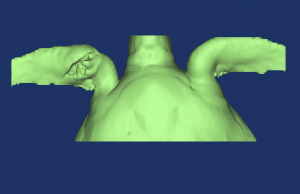
Using the flipper surface as a guide, a solid surface was created which followed the contours of the limb.
After creating the surface, a “mold” of the flipper was made which served as the foundation of the brace.
This rough mold was further refined to include hinges and locking mechanisms to hold it in place while on the turtle. After several iterations, we were able to devise a hinge and clamp system that better suited the needs of the turtle and brace alike. In addition, the surface and shape of the brace had to be smoothed and altered slightly so that a better fit could be achieved which was easily done in ClayTools.
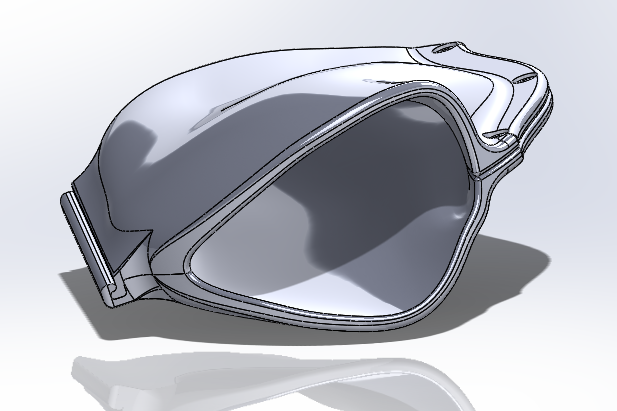
We also printed a model of the broken flipper so that we could test out the brace to check the fit, placement of the wound opening, and structural aspects of brace using our Objet Connex 350. The soft tissues were priinted with the tango black ( rubber-like) material while the bones were printed using the vero-white (hard plastic) material.
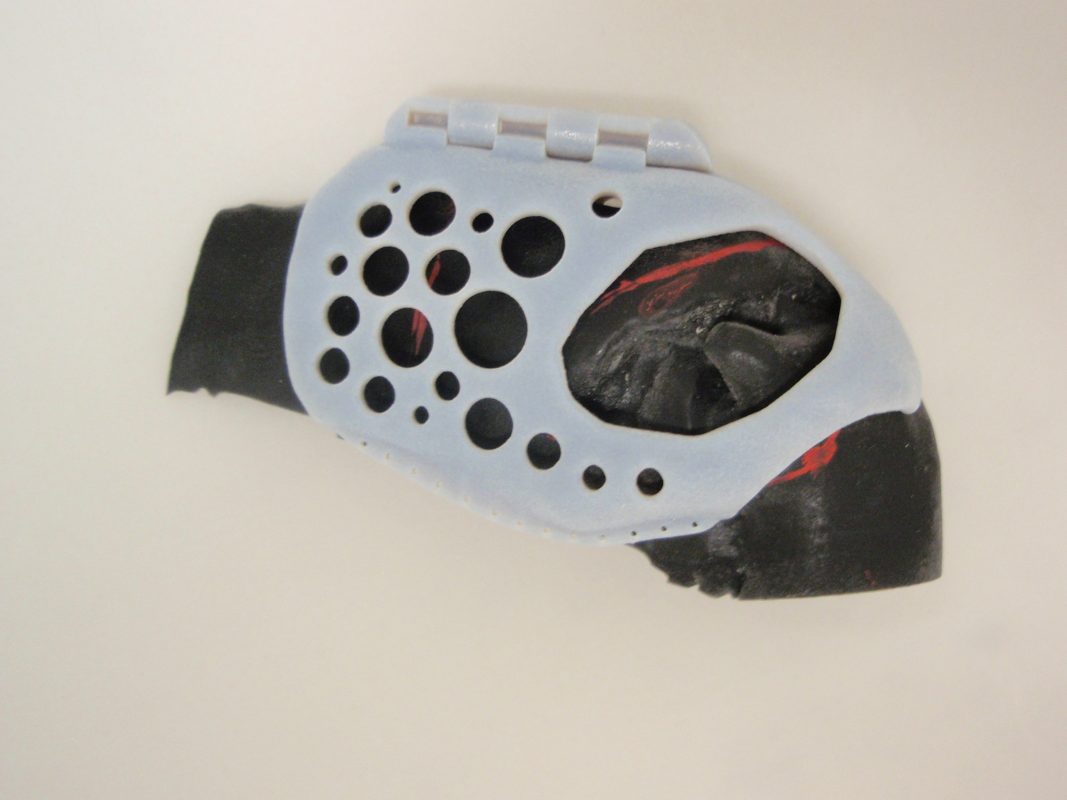
Unfortunately our initial assumptions regarding the symmetry of the contralateral limb turned out to be incorrect. Based on the connex models, we determined that an entirely new approach was required.
Going back to the original CT scan/ stl model we loaded the file into a software called Clay tools, this uses a haptic interface so that we can “feel” the stl model in the computer, using this approach we were able to virtually reduce the fracture and repair the anatomic distortions present in the scan. This allowed us to build a much more accurate and refined brace. Rather than design a complex latching system, the rear connection is designed to be sutured together making it relatively easy to don and doff with readily available resources.
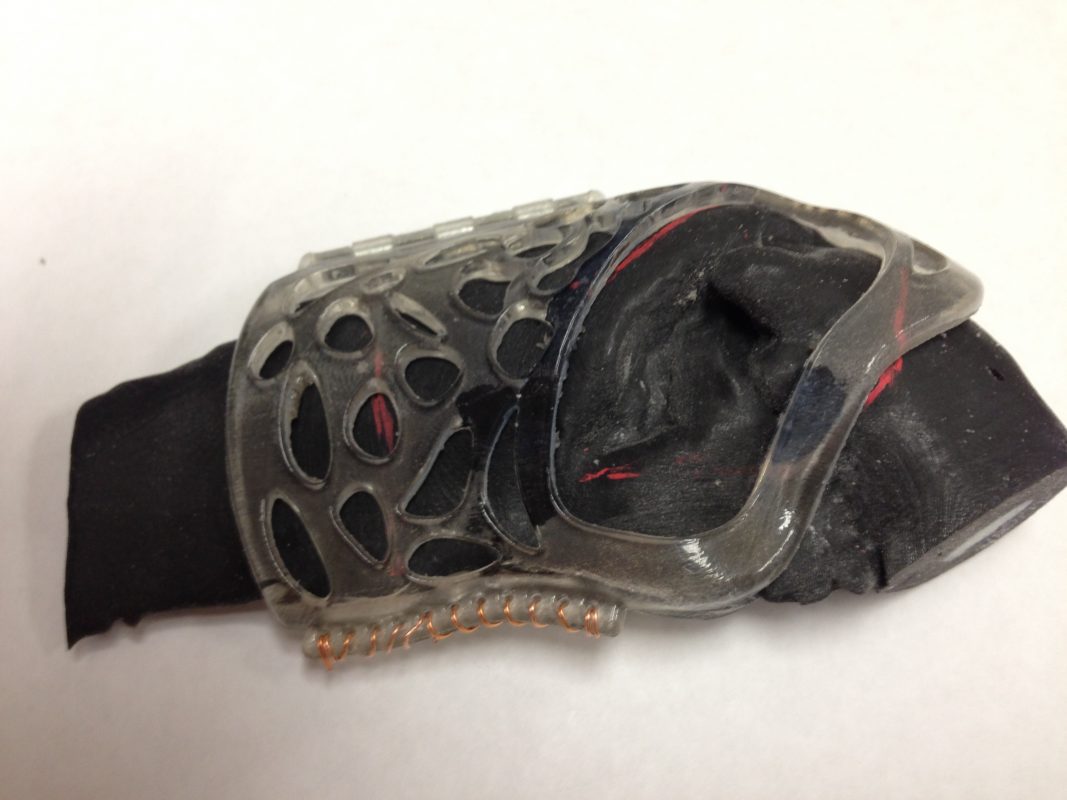
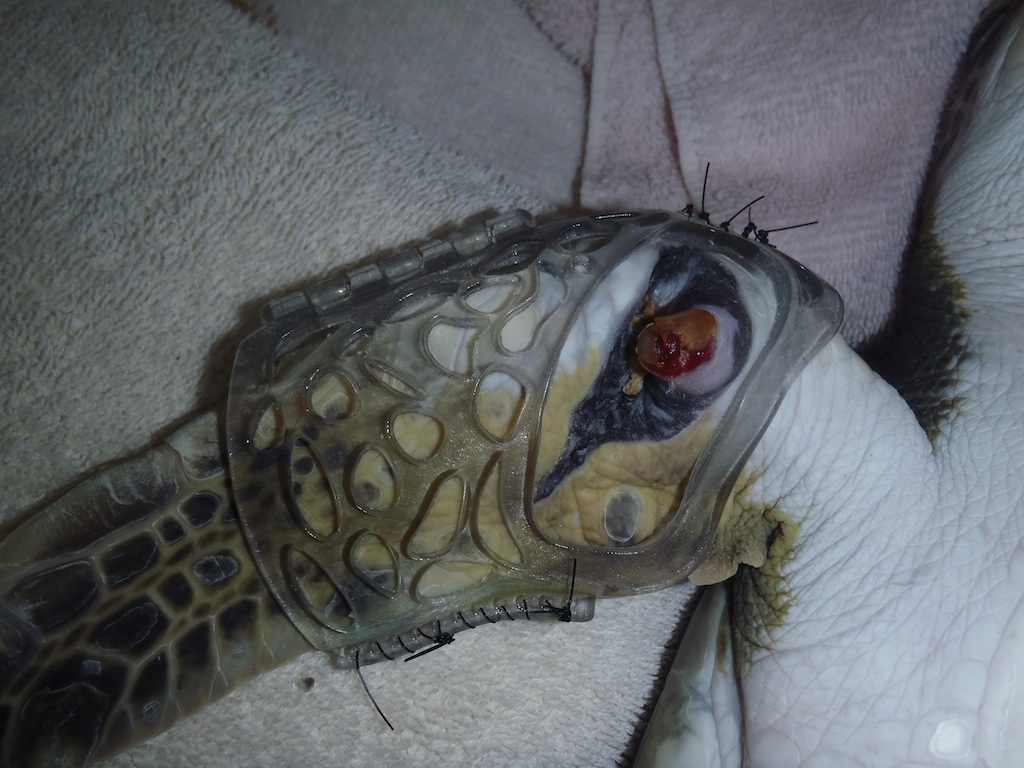
After a couple of iterations, we were able to fabricate a brace that fit the patient very well. The final design was based on the surface model of the “virtually” reduced fracture and globally enlarged by 3%. So far the device is fitting well and the Turtle is the doing well (eating and swimming). We are looking forward to hearing more about the turtle’s progress and will post some updates as they come in.
